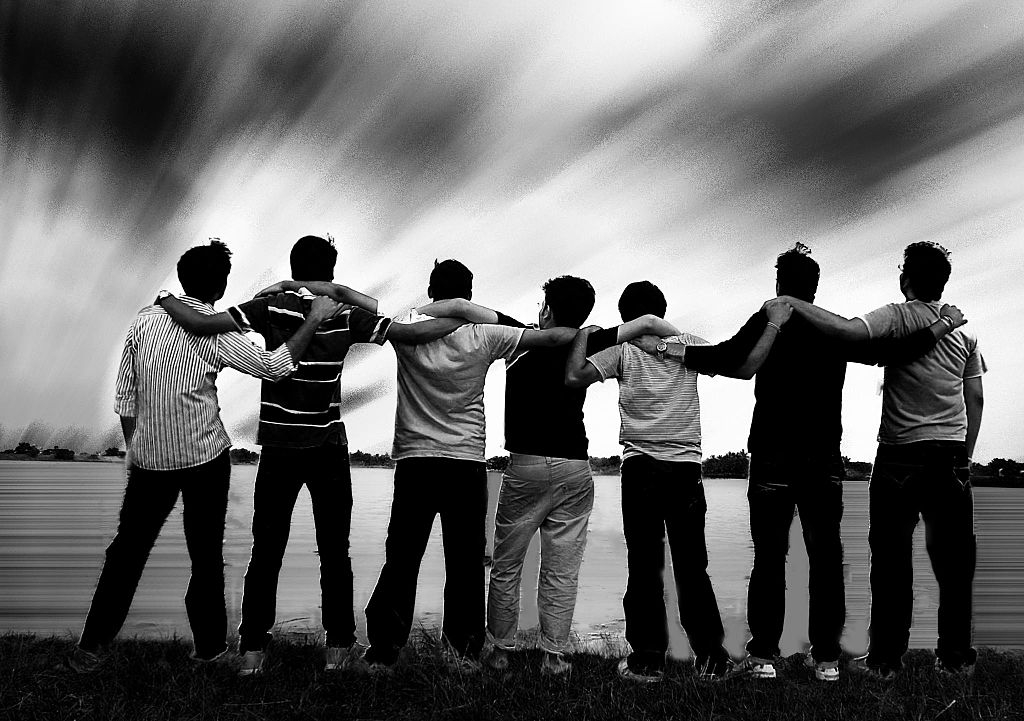Life without amiable companionship was unthinkable to the sages of the Talmud. According to one rabbinic story, when the legendary miracle-worker Honi the Circle-Maker woke from seventy years of sleep, he faced despair because he was shunned by a new generation of scholars who neither recognized nor attended to him. In his suffering, Honi prayed for death to release him from loneliness, prompting an unnamed sage to utter, “Either friendship or death” (Babylonian Talmud Ta’anit 23a).
The benefits of friendship are appreciated by Jewish tradition. Ecclesiastes wrote, “Two are better than one because they have a good reward for their labor. For if they fall, the one will lift up his fellow; but woe to him that is alone when he falls, for he has not another to help him up” (4:9-10).
Friendship is clearly more than a social connection in the Jewish context. Friends offer each other help, loyalty, protection, support, unselfish love, and moral guidance. Judaism defines friendship as one of the primary relationships in life, a tie at times exceeding that which bonds blood relatives.
Biblical Friendship
One of the most famous friendships of the Bible, that between David and Jonathan, was sealed by a vow promising eternal amity between their children (I Samuel 20:42). Jonathan saved David from the murderous intentions of his father, King Saul, despite the fact that David was a threat to his own inheritance of the kingship. Similarly, the Moabite Ruth literally left her people behind in choosing to accompany Naomi (her Israelite mother-in-law) to the land of Israel.
Rabbinic Friendship
The rabbis of the talmudic and medieval periods had a very specific idea of what a friendship is. The friendships they describe are single sex and single faith–that is, between two Jewish men. (They did, however, include “friendship” (re’ut) as one of the components of marital joy in the wedding liturgy.) At the center of this model is a shared pursuit of holiness, primarily through the study of Torah. One is not even to part from one’s friend without exchanging words of Torah (BT Berakhot 31a).
Particularly valued is the custom of finding a partner with whom to study the classical Jewish texts. This partnership, known by the Aramaic term havruta, is fueled by passionate energy and mutual concern for each other’s spiritual welfare. The tone of a havruta pair’s interaction and spirited debates is by turns amiable and challenging.
The learning that comes in the company of one’s peers is highly valued in Jewish life, as expressed by this quote from the Talmud: “I have learned much from my teachers, but from my friends more than my teachers” (BT Ta’anit 7a). The havruta method of learningstill exists today in many Jewish learning situations across the religious spectrum, although in many places study pairs can be mixed-gender or same-gender.
The ancient rabbis had a very clear understanding that one’s peers create an environment in which the self develops. In the Mishnah, we find advice on the importance of selecting one’s friends: “Come and learn–which is the straight [right] path to which a person should adhere? A good friend.” (Avot 2:13).
Likewise, “Distance oneself from a bad neighbor, and do not befriend an evil person” (Avot 1:7). This notion of “peer pressure” reflects the notion that our friends influence our perceptions, choices, and actions, either consciously or otherwise–and that it is important to choose friends not simply by who we are, but by who we would like to be.
Hasidic Judaism places special emphasis on the value of friendship among the adherents of a given Hasidic rebbe, raising it to a level of theological significance. The hasidic sub-groups within the Jewish communities of late-18th and 19th century Eastern Europe, originally small and embattled, relied heavily on the mutual support networks formed within their communities.
Their situation in the Jewish world may mirror that of the larger Jewish community in the non-Jewish world, and may offer us an insight into why friendship has been an important theme of Jewish communal life and thought through the ages.
Hasidic
Pronounced: khah-SID-ik, Origin: Hebrew, a stream within ultra-Orthodox Judaism that grew out of an 18th-century mystical revival movement.
havruta
Pronounced: khahv-ROOT-uh, Origin: Hebrew, a study partner for learning Jewish texts, the word also refers to the traditional practice of studying Jewish texts in pairs, which is considered preferable to reading them alone.
Talmud
Pronounced: TALL-mud, Origin: Hebrew, the set of teachings and commentaries on the Torah that form the basis for Jewish law. Comprised of the Mishnah and the Gemara, it contains the opinions of thousands of rabbis from different periods in Jewish history.
Torah
Pronunced: TORE-uh, Origin: Hebrew, the Five Books of Moses.



